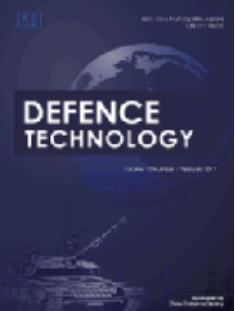Screening of metal additives in ABS polymer fuel for enhanced performance in hybrid rocket motors: A computational analysis using CEA
IF 5.9
Q1 ENGINEERING, MULTIDISCIPLINARY
引用次数: 0
Abstract
This study investigates the potential of metal additives in acrylonitrile butadiene styrene (ABS) polymer fuel to enhance hybrid rocket motor (HRM) performance through computational analysis, Chemical Equilibrium with Applications (CEA), software. ABS was selected as the base fuel due to its thermoplastic nature, which allows for the creation of complex fuel geometries through 3D printing, offering significant flexibility in fuel design. Hybrid rockets, which combine a solid fuel with a liquid oxidiser, offer advantages in terms of operational simplicity and safety. However, conventional polymer fuels often exhibit low regression rates and suboptimal combustion efficiencies. In this research, we evaluated a range of metal additives—aluminium (Al), boron (B), nickel (Ni), copper (Cu), and iron (Fe)—at chamber pressures ranging from 1 to 30 bar and oxidiser-to-fuel (O/F) ratios between 1.1 and 12, resulting in 1800 unique test conditions. The main performance parameters used to assess each formulation were characteristic velocity (C∗) and adiabatic flame temperature. The results revealed that each test produced a different optimum O/F ratio, with most ratios falling between 4 and 6. The highest performance was achieved at a chamber pressure of 30 bar across all formulations. Among the additives, Al and B demonstrated significant potential for improved combustion performance with increasing metal loadings. In contrast, Fe, Cu, and Ni reached optimal performance at a minimum loading of 1%. Future work includes investigating B-Al metal composites as additives into the ABS base polymer fuel, and doing experimental validation tests where the metallised ABS polymer fuel is 3D printed.
混合动力火箭发动机ABS聚合物燃料中金属添加剂的筛选:CEA计算分析
本研究通过计算分析,化学平衡与应用(CEA),软件研究了金属添加剂在丙烯腈-丁二烯-苯乙烯(ABS)聚合物燃料中提高混合火箭发动机(HRM)性能的潜力。ABS之所以被选为基础燃料,是因为它的热塑性特性,它允许通过3D打印创建复杂的燃料几何形状,为燃料设计提供了极大的灵活性。混合火箭结合了固体燃料和液体氧化剂,在操作简单和安全方面具有优势。然而,传统的聚合物燃料往往表现出低回复率和次优燃烧效率。在这项研究中,我们评估了一系列金属添加剂——铝(Al)、硼(B)、镍(Ni)、铜(Cu)和铁(Fe)——在1到30巴的室内压力范围内,氧化剂与燃料(O/F)比在1.1到12之间,产生了1800个独特的测试条件。用于评估每种配方的主要性能参数是特征速度(C *)和绝热火焰温度。结果表明,每次测试都会产生不同的最佳O/F比率,大多数比率在4到6之间。在所有配方中,在30 bar的腔室压力下实现了最高性能。在添加剂中,Al和B表现出随着金属负荷的增加而显著改善燃烧性能的潜力。相比之下,Fe, Cu和Ni在最小负载为1%时达到最佳性能。未来的工作包括研究B-Al金属复合材料作为ABS基聚合物燃料的添加剂,并对金属化ABS聚合物燃料进行3D打印的实验验证测试。
本文章由计算机程序翻译,如有差异,请以英文原文为准。
求助全文
约1分钟内获得全文
求助全文
来源期刊

Defence Technology(防务技术)
Mechanical Engineering, Control and Systems Engineering, Industrial and Manufacturing Engineering
CiteScore
8.70
自引率
0.00%
发文量
728
审稿时长
25 days
期刊介绍:
Defence Technology, a peer reviewed journal, is published monthly and aims to become the best international academic exchange platform for the research related to defence technology. It publishes original research papers having direct bearing on defence, with a balanced coverage on analytical, experimental, numerical simulation and applied investigations. It covers various disciplines of science, technology and engineering.
 求助内容:
求助内容: 应助结果提醒方式:
应助结果提醒方式:


